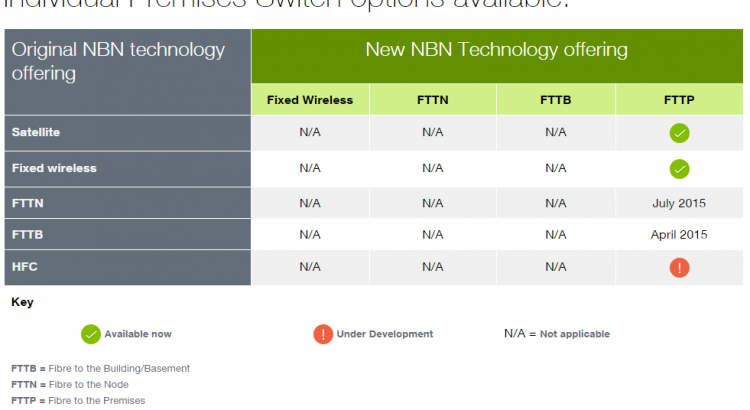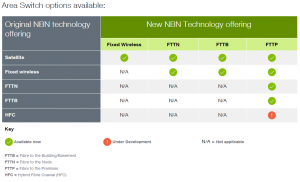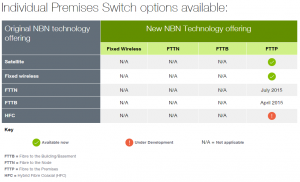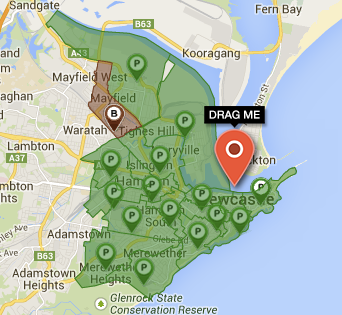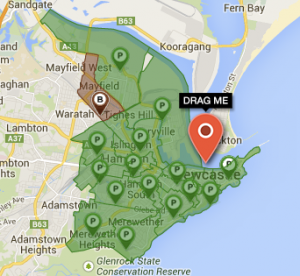NBN Co is set to give consumers more choice over the technology being rolled out. They have released their new Technology Choice Policy which will allow individuals or whole areas to switch from NBN Co’s designated technology under the Multi-Technology Mix model to an alternative technology type at a cost to the consumer.
This is a much anticipated component of the revised rollout policy after NBN Co’s switch to the Multi-Technology Mix — allowing consumers to purchase a “fibre-on-demand” product. However, there are no details or estimates on the expected cost of upgrade build.
As part of the application and network design process, NBN Co will charge individuals $600 (ex GST), and at least $1,000 (ex GST) for a quote to network switch over a large area. According to the NBN Co website, the final costs for each the different technology upgrade “can range from a few thousand dollars to tens of thousands of dollars” for an individual premises switch and “can range from tens of thousands of dollars to several millions of dollars” for a switch of an entire service area.
While absent from the actual policy document, NBN Co’s Chief Customer Officer John Simon indicated to ZDNet’s Josh Taylor that the fee for the application will be refunded if the extension goes ahead.
At launch, NBN Co will allow applications to switch an entire area from FTTB, FTTN, Fixed Wireless or Satellite to a full fibre network (FTTP). Starting April, individuals be able to make an application to switch from FTTB to FTTP; and following from that, the switch from FTTN to FTTP will be available in July 2015.
However, the possibility of a HFC to FTTP upgrade is still being considered and developed by NBN Co.
Clarification: Policy was intended to be released on Friday by NBN Co, but was made available on its website on Thursday night. Because NBN Co did intend to release it on Friday, the date when this policy was “released” will still say “Friday” in this post
